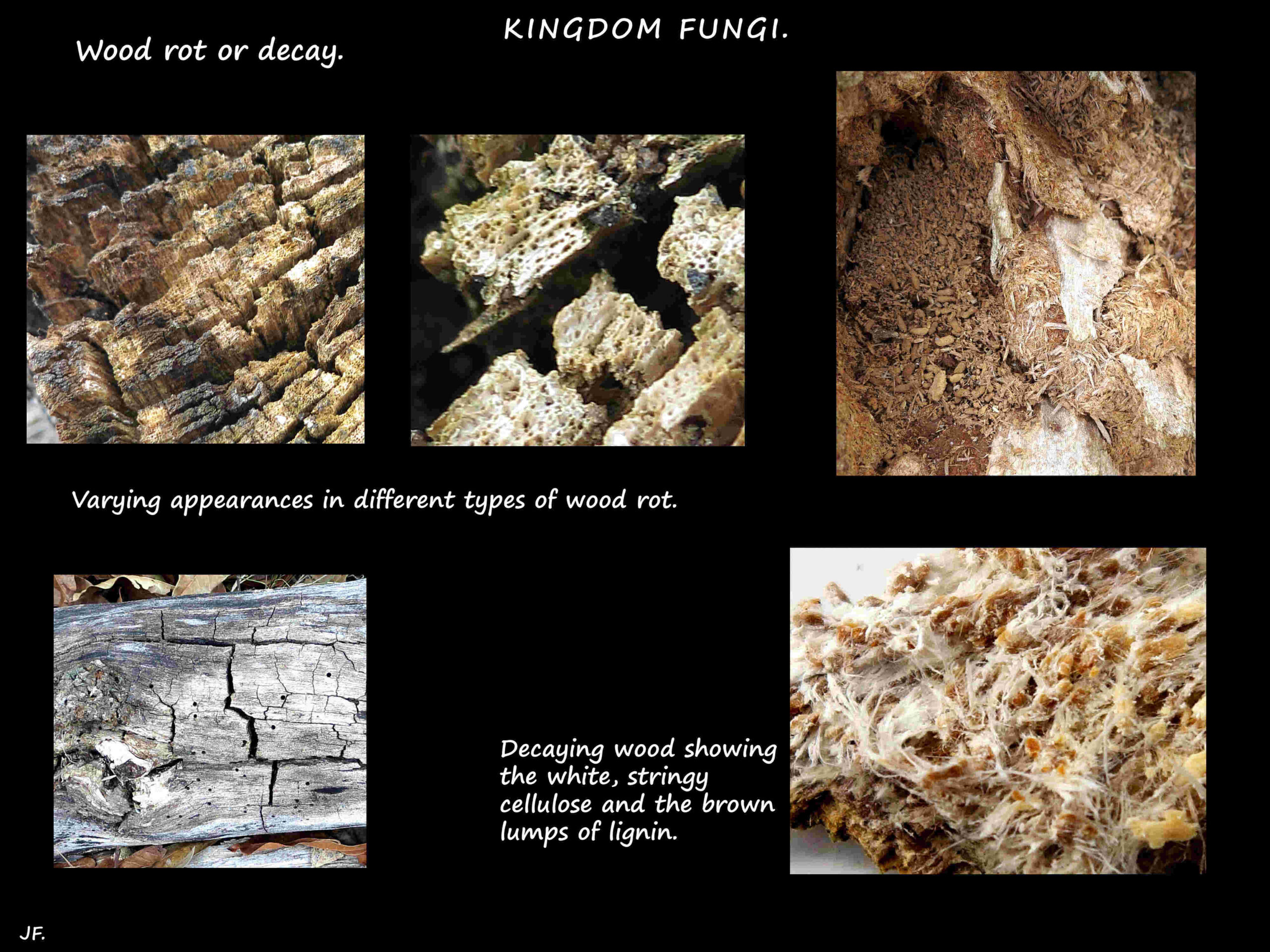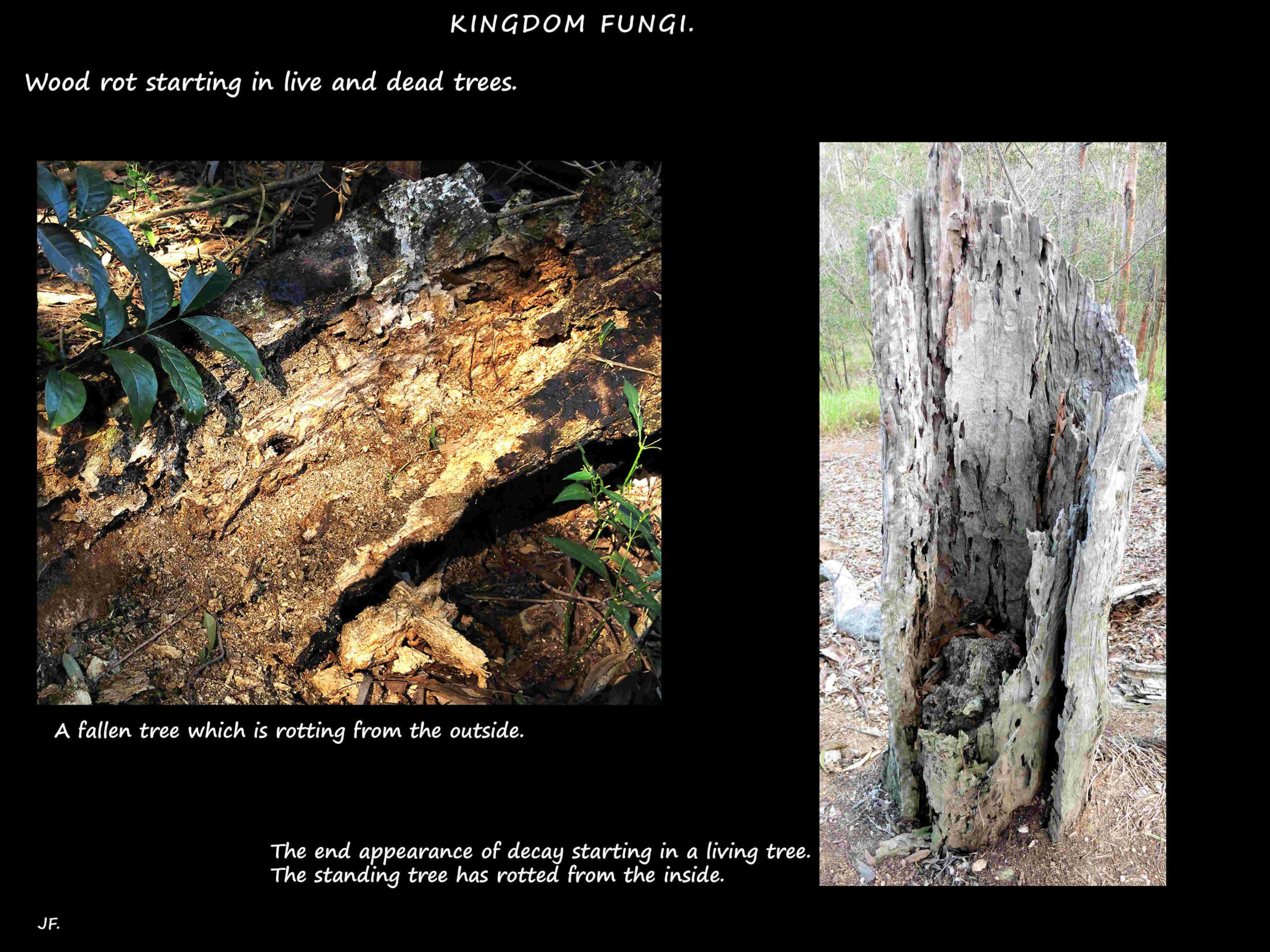Composition of wood & wood rot.
As so many fungi, both Ascomycetes and Basidiomycetes, live on wood and obtain their nutrients from it,
I have included a small section on wood and the processes involved in wood rot.
Fungi are the main causes of wood decay.
The living parts of a tree are the roots, leaves and a thin layer under the bark, the rest being dead heartwood.
The wood-rot fungi mainly feed on dead wood but some will grow on live wood and may cause it to decay.
Other fungi can attack dry timber used in construction.
The cell walls of all plants are made of cellulose, a simple carbohydrate, and are white in colour.
Tree cells have a second wall of brown lignin inside the primary wall.
Lignin is a complex polymer and harder to break down than cellulose.
The dry weight of wood is 40-50% cellulose, 25-40% hemicellulose and 20-35% lignin.
Dry wood will not rot.
If wood is wet long enough for its water content to rise to over 28% the cells can absorb
no more and the water becomes available as free water.
When there is free water the timber is at risk of being attacked by wood rot fungi.
Wood-decay fungi secrete digestive enzymes and other chemicals to break the wood down.
The resulting simplified products are absorbed by the fungus as food or recycled in the soil.
Some fungi attack the lignin, others the cellulose and a few can attack both.
The enzymes require free water to move in so dry wood will not rot.
Wood decay fungi may be classified by the appearance of the wood residue left and this depends on what
part of the wood the fungi attack.
White and brown rot are the two main types.
In brown rot wood has a brownish, cubed appearance and in white rot it appears white and fibrous.
Other types include dry rot which is a form of brown rot, and soft rot.
In general, live trees tend to decay from the inside out and dead trees from the outside in.
This is largely due to the fact that sapwood has a very effective active resistance when
the tree is alive but virtually no resistance once the tree is dead.
J.F.



